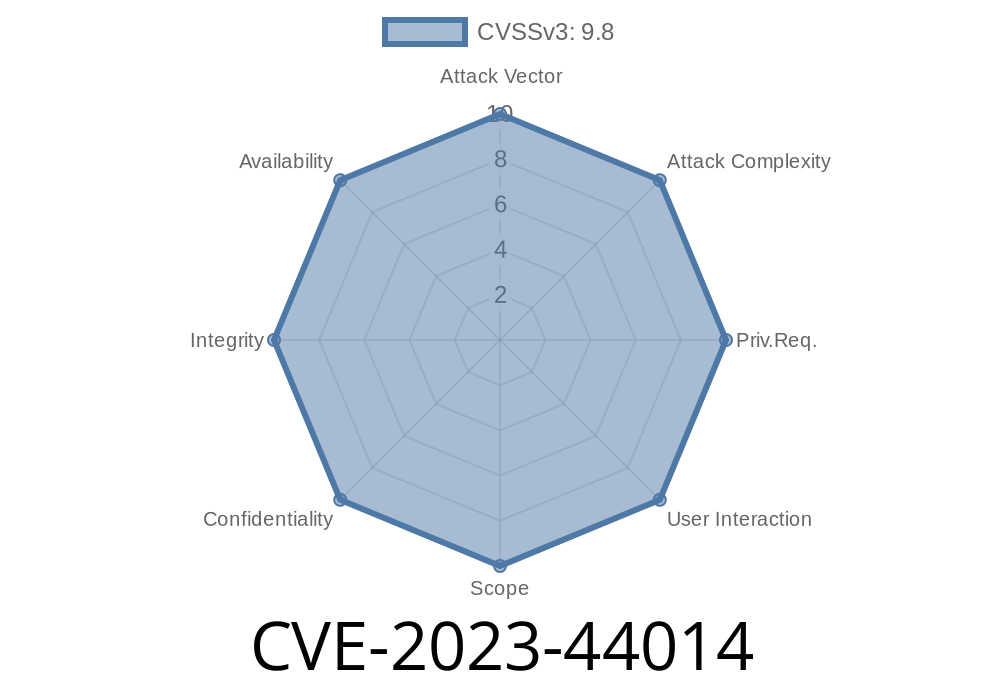A new security vulnerability has been discovered in Tenda AC10U v1. (US_AC10UV1.RTL_V15.03.06.49_multi_TDE01), which allows remote attackers to exploit stack overflows within the device. This critical vulnerability, identified as CVE-2023-44014, affects the formSetMacFilterCfg function and can be exploited through the macFilterType and deviceList parameters.
In this article, we will take a closer look at the vulnerability, analyze the related code snippets, provide links to original references, and discuss exploit details. Bear in mind that this is a critical security issue, and users should take appropriate actions to protect their devices from a possible exploit.
Code Snippet
The vulnerability arises from multiple instances of unchecked stack overflows within the formSetMacFilterCfg function of the device firmware. Here's a simple representation of the vulnerable code snippet:
void formSetMacFilterCfg(cgiFormPtr form)
{
char macFilterType[16] = {};
char deviceList[1024] = {};
// Read values from HTTP request
cgiFormString("macFilterType", macFilterType, sizeof(macFilterType));
cgiFormString("deviceList", deviceList, sizeof(deviceList));
// Use these values in the firmware logic
...
}
As seen in the code snippet, the formSetMacFilterCfg function reads the values of macFilterType and deviceList from an HTTP request without properly validating their lengths, thus causing a potential buffer overflow vulnerability.
The following references provide more information and details about the CVE-2023-44014 vulnerability
1. CVE-2023-44014 on MITRE CVE database.
2. Tenda-AC10U v1. Vulnerability Report - A complete report detailing the discovery, vulnerability analysis, and impact of the vulnerability.
Exploit Details
An attacker can exploit this vulnerability by sending a specially crafted HTTP request to the affected device, using the macFilterType and deviceList parameters to overflow the stack and execute malicious code. The exploit process is as follows:
1. The attacker sends an HTTP request with a long value for macFilterType and/or deviceList that exceeds the buffer size.
2. The specially crafted request causes a stack overflow in the formSetMacFilterCfg function, thereby corrupting the stack and the stored return address.
3. The corrupted return address, when executed, could allow the attacker to gain control of the device and execute arbitrary code or cause a denial of service.
To mitigate this vulnerability, users should take the following steps
1. Update the Tenda AC10U firmware to the latest version, as the manufacturer may have released a patch addressing this vulnerability.
Continuously monitor network traffic for any unusual activities or potential exploit attempts.
In conclusion, CVE-2023-44014 is a critical stack overflow vulnerability in the formSetMacFilterCfg function of Tenda AC10U v1. devices. Users must take proactive measures by updating the firmware and closely monitoring their network to protect their devices from exploit attempts.
Timeline
Published on: 09/27/2023 15:19:34 UTC
Last modified on: 09/27/2023 18:45:53 UTC
